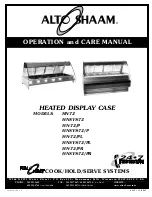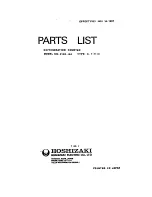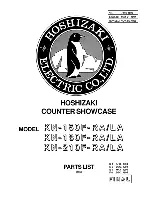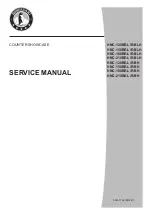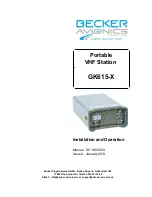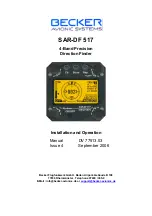
Horis User Manual
1.4
Roll, Pitch and Yaw
Description
Value
Operational voltage
5 to 32 V
Operating temperature
-30
∼
+85
◦
C
Humidity
30
∼
90 %, non condensing
Barometric sensor
24 bit, 10 to 1200 hPa, 20 cm resolution
QNH range
590 to 1080 hPa, (17.42 to 31.89 inHg)
Airspeed sensor
12 bit, 0 to 69 hPa, 381 km/h, 205 kt
resolution
<
0.1 km/h
(units before Oct 19)
0 to 50 hPa, 325 km/h, 175 kt
Acceleration
16 bit, 3D, dynamic range 0 to 16 g,
typical resolution 0.12 mg
Angular rate
16 bit, 3D, 250
◦
/s, resolution 0.009
◦
/s
GPS
10 Hz, 66 channel, hot start 1 s,
cold start 35 s, sensitivity -165 dBm
OAT
12 bit, range -55 to 125
◦
C, 0.5
◦
C accu-
racy
Communication
CAN bus, 29 bit header, 500 kbit, Kanar-
dia protocol
RS 232, NMEA out, 9600 baud (default)
Sensor processor
32 bit, ARM Cortex M3, 80 Mhz
Display processor
32 bit, ARM Cortex M3 - LCD, 120 Mhz
Start-up time
System less than 1 s, AHRS about 5 s.
Table 1:
Technical specifications of Horis instrument.
from accelerometers, angular rates, true airspeed and airspeed accel-
eration. This apparent gravity is then used to stabilize roll and pitch
angles, but it can’t be used to stabilize yaw. The second measure-
ment is the direction measurement. GPS track is used to stabilize
yaw.
A combination of angular rate time integration and corrective mea-
surements are resulting in final solution. They are combined using
11
©
Kanardia
2021
Содержание Horis
Страница 2: ......




























